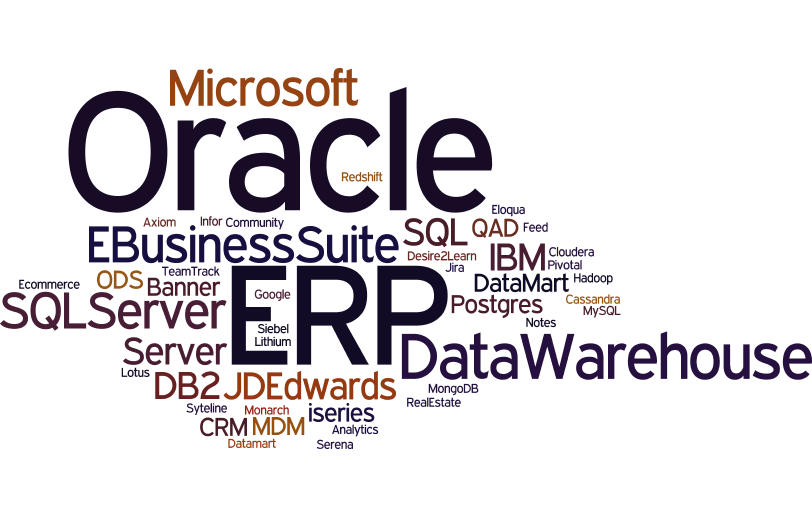Greenfield Hybrid Data Integration with Salesforce and OData

New technology demands new methods and workflows, and the newest connectivity options from Salesforce are no different. Sumit Sarkar introduces Greenfield Data Integration for consuming external data in Salesforce.
Salesforce made waves last year with the release of their exciting external data strategy, Lightning Connect. Frequent readers of the blog know how exciting this new connectivity option is for Progress and for me personally as an expert in external object connectivity for the Salesforce platform with contributions across Odata.org, Dreamforce ’14, and ”5 day POC” on developers.salesforce.com.
With Lightning Connect, Salesforce users are able to consume external data in real-time through the OData protocol. A number of OData producers have emerged in the ecosystem to expose OData from different data sources. While OData is an OASIS standard REST API, the architectures and integration patterns for OData producers vary greatly.
To address this challenge, we need a new place to start—Greenfield Hybrid Data Integration.
What is Greenfield Data Integration?
“Greenfield Data Integration” refers to a direct, secure connection from Salesforce to the target data source without additional layers of data transformation via middleware. Meanwhile, we refer to a connection as “hybrid” when it involves a combination of cloud and on-premise sources being accessed simultaneously through Greenfield Data Integration.
With Salesforce Lightning Connect and the introduction of connectivity to back office systems from the cloud, we’re seeing major shifts in existing data integration platforms.
One example of this shift is SAP Netweaver, which produces OData from an existing data infrastructure. However, this is not Greenfield Data Integration because the external objects connect into another layer of middleware—for example, ESB, ETL, MQ or virtualization.
When should I use Greenfield Data Integration?
From my experience, Greenfield Data Integration is the best starting point for most Lightning Connect POCs.
Whether data integration teams or Salesforce developers make the connection, the Greenfield Data approach provides the most agile environment for high developer productivity in the spirit of the Salesforce platform.
Greenfield Data connectivity means you get unlimited direct access to the data that is easier to maintain over time as systems and teams change. This agility and ease of use is the reason Intuit selected this approach to integrate their legacy Siebel data with their newer Salesforce system.
When thinking more specifically about your source data, Greenfield Data Integration works best when you don’t need lots of transformation in the middle. This is especially true when the data model easily fits into Salesforce (either directly or using logical views), and the systems are always available for query and no additional caching or persistence is required.
What Style of Lightning Connect Integration is Best?
DataDirect is the leading vendor-neutral vendor for open data connectivity, including OData. In fact, many of the producers in the OData ecosystem embed our connectivity solutions for different endpoints. From our perspective, all integration options are great, so I thought I’d ask a few friends for their thoughts.
Jaime Meritt, Chief Architect of the industry’s first enterprise service bus, Sonic ESB (Aurea) says, “Greenfield Data Integration is the first place organizations naturally start with for Lighting Connect. As the number of integration projects increase, a subset of those may require additional middleware. For example, shops might consider an ESB, because they may require additional layer of data transformation for the integration or persisting data that is sporadically available.”
Mitul Patel, Senior Integration Consultant in the Center of Excellence for Salesforce Integration at Appirio, with 10+ years of experience and certification in both Salesforce and WebMethods says, “Many times on projects, I see swivel chair processes. Users need to open multiple applications to carry on their everyday business processes. These use cases call for integration to improve those processes. Integration's task is to provide all the relevant data to users in one place. Such integration development is more efficient with Greenfield Data Integration compared to traditional ESB or ETL solutions. Greenfield Data Integration is considered a direct connection, so for 'Hub & Spoke' or 'Bus Architecture' integration, ESB and ETL are more suitable.”
Basically, each approach has its own strengths and weaknesses, but Greenfield Data Integration has the advantage of agility, which makes it an ideal place to start with Lightning Connect integration. The following table compares the available approaches from the perspective of Salesforce:
| Self-Service and Agile | Breadth of Connections | Right-Time | Orchestration | Ease of Maintenance | Secure | |
| Greenfield Data Integration (direct connection) | x | x | x | x | x | |
| Enterprise Service Bus (ESB) | x | x | x | x | ||
| Data Integration (ETL) | x | x | x |
Getting Started
You can get started on your Lightning Connect journey with a free trial of Progress® DataDirect Cloud®, the Salesforce-recommended solution for Greenfield Data Integration.
And if you have any questions regarding Greenfield Data Integration or Salesforce data connectivity in general, don’t hesitate to reach out or leave a comment. We’ve worked with over 10,000 Salesforce users to date who are in production and using Lightning Connect for Greenfield Data Integration with DataDirect Cloud.

